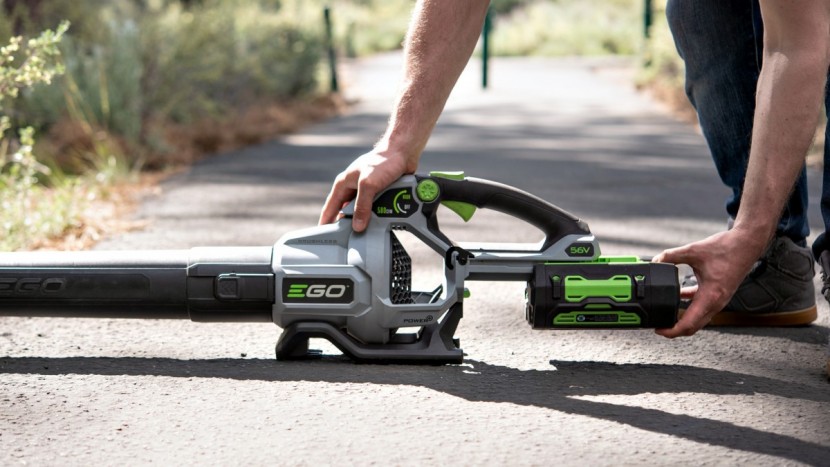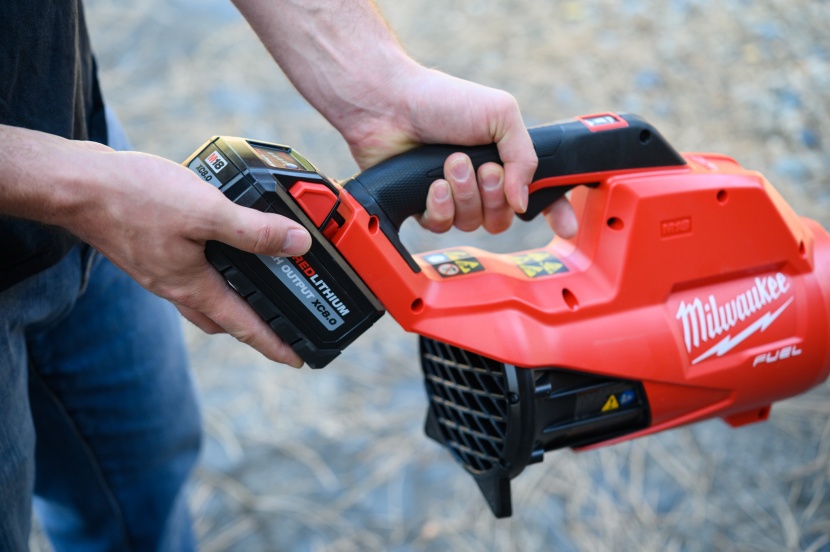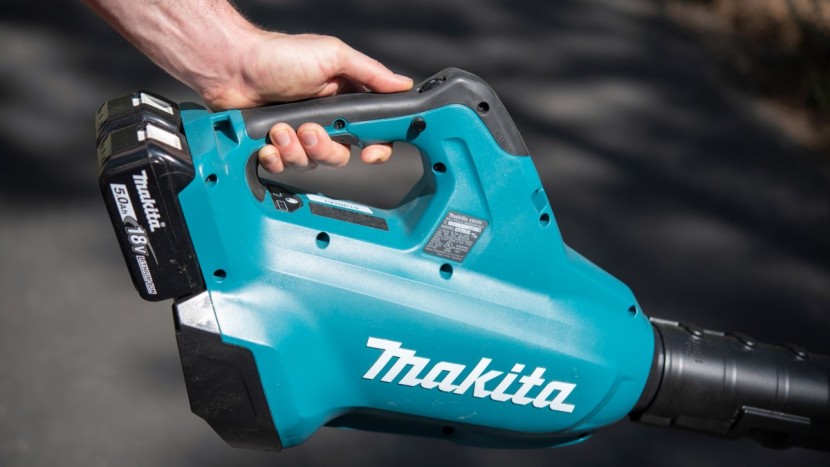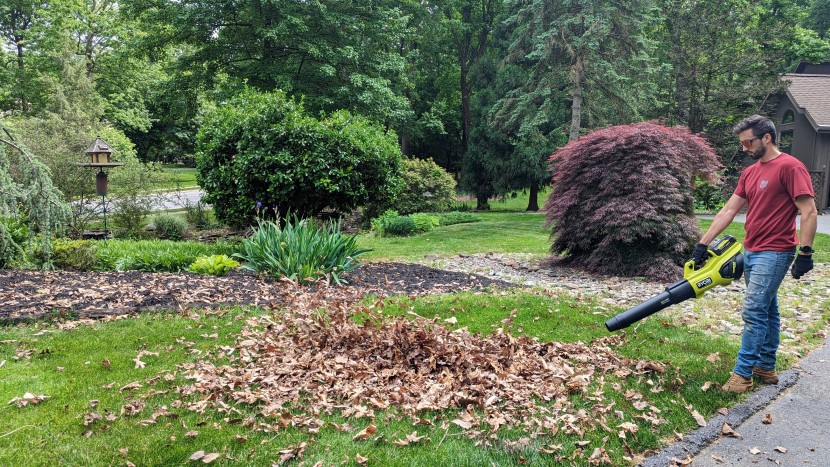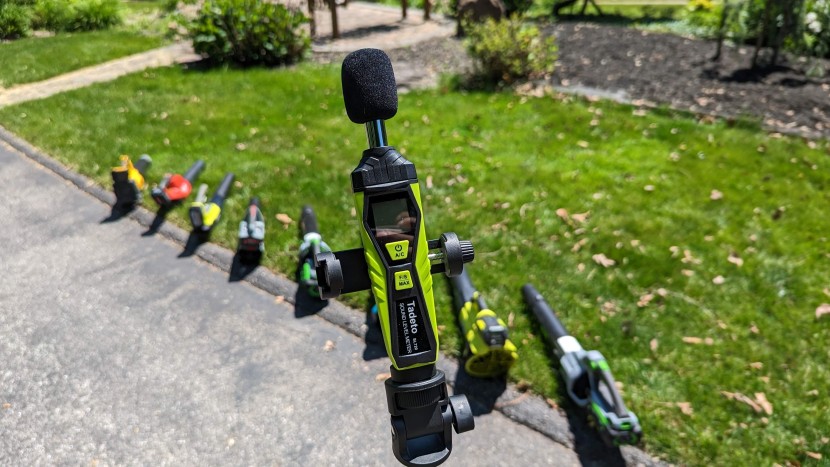We've been researching, testing, and retesting these common power tools for several years. For every update, we purchase the most popular, most interesting, or best blowers to test. We then pit them head to head out in a series of tests, evaluations, and assessments, and here's how we did it.
Power
First, we rated and compared the power produced by each model. The vast majority of these products measure — and heavily market — their maximum airspeed, although this doesn't necessarily correlate to more performance. Performance is a combination of both maximum airspeed and airflow. We conducted a trio of diverse tests to test each leaf blower's blowing capabilities.
We started our power testing with some quantitative analysis, measuring the blowers' airflow and their rates
. The manufacturer often states these two measurements. Although we did not compare the brand's in-house numbers versus our results — as we could not guarantee similar testing conditions between the manufacturers and us — we awarded points based on which models pushed the most air the fastest. Airflow is the volume of air that a blower can push and is measured in cubic feet per meter (CFM). The velocity, expressed in miles per hour (mph), is the rate at which it can propel that air. Both are important in performance evaluation.
A specialized anemometer and pitot tube — the same devices that measure airspeed in fighter jets — were used to measure both of these values. Each model was measured at five inches and 30 inches from the nozzle to the pitot tube, on both high and turbo speed. This same test was repeated to measure both air flow and velocity.
While quantitative measurements are nice, we needed real-world testing to truly evaluate each product's performance. We developed a repeatable test that could be used to accurately and consistently measure the performance of each leaf blower in a way that emulates how you might use it at home. First, we gathered a large trash can full of dry leaves and debris from around our area and set up a target zone that was 8x8 feet wide. Then we spread the leaves along a starting line 16 feet from the target zone and measured how long it took to blow all the leaves into it. This simulated clearing leaves and debris from the yard, whether you plan on moving them to the street or into bags. Scoring was based on the time it took to accomplish this, and additional points were awarded or subtracted if anything exceptional impacted the performance.
Battery
Our next metric tested what actually fuels these tools: batteries. In this metric, we looked at how long each one lasted and how long each charger takes to restore a 100% drained power bank.
To test out and compare the effective run time of each model, we started each product with a fully charged battery, then ran it on high until it died. It's important to note that many tool brands produce batteries of multiple sizes. While you can easily increase the run time of a model by choosing a larger battery size, we tested all devices with their included size option.
Once we had completely burned through the juice for each tool, we timed how long it took to fully renew them using their included chargers, awarding scores based on how that amount of time compared to the rest of the group.
Ergonomics
Next, we had our testers and judges rate and score each leaf model's ergonomics and comfort level. We assessed the pleasantness of using each device, such as balance, ambidextrousness, and vibrations felt while using the leaf blower. We also looked at features that improved usability, such as variable trigger speed, auto-lock on, additional nozzles that may (or may not) have been included, and if the battery could be shared across other tools in the manufacturer's lineup. Our testers noted anything that detracted from the overall user experience across our real-world performance testing.
To evaluate balance, we tested and rated the convenience and feel of the angle of the nozzle when holding it normally and powered on. We were seeking products that naturally held an effective angle for sweeping and blowing lifeless organic foliage without any additional work, as it becomes exceptionally fatiguing if you have to hold up the leaf blower to get the proper angle.
Speaking of fatigue, we then measured the weight of each device with the power bank installed. We also compared the air intake location, deducting points from models prone to trying to suck in your clothes when switching hands or during normal use. Lastly, we tried to use each model in both hands and deducted points from those not ambidextrous-friendly. In an objective measurement, we awarded points for blowers with common usability features, such as adjusting power by squeezing a trigger, locking on at a set power level, switching nozzles depending on desired usage, or sharing batteries with other tools.
Noise
For our final round of assessments, we rated and compared the noise level of each blower while in operation. Using an SPL meter, we measured the noise at the ear of the user while holding the blower normally at full power. We also considered the quality of that noise and if it's likely to be found “annoying” or “acceptable” by family members, roommates, and neighbors.






